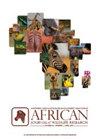1942年至2018年南非尤哈兰巴-德拉肯斯堡公园及其周边地区的公共土地(大羚羊)人口趋势
IF 1
4区 环境科学与生态学
Q2 Agricultural and Biological Sciences
引用次数: 1
摘要
保护区的管理需要了解可能影响生态系统功能的大型哺乳动物物种的长期种群趋势。普通羚羊(Tragelaphus oryx)是uKhahlamba Drakensberg公园中数量最多的大型哺乳动物。多年来进行了空中和地面调查,以监测常见的陆地人口。这项研究探讨了1942年至2018年间公共土地人口规模、结构、分布和死亡率的长期趋势,考察了与气候、自然影响、管理和调查效果有关的变化。从1942年到1982年,Drakensberg的普通草原人口保持相对稳定,然后在1983年到1990年间增加。然而,在2003年至2018年间,随着公园内分布范围减少37%,观察到了持续的下降。在整个时期,成年人占总人口的59.4%,亚成年人和小牛分别占19.1%和18.8%,其余2.7%的年龄不详。成年:亚成年:小牛的比例为1:0.32:3.32,雄性:雌性为1:3.63,这表明人口中的性别比例扭曲,青少年数量较少。人类活动对人口产生了重大影响,30.3%的死亡归因于偷猎。然而,数量未知的许可出口可能是导致死亡的最重要原因。近年来,越来越多的土地迁移到保护区外的农田,似乎导致了公园内土地分布的下降;然而,这并不影响人口趋势,因为耕地上的人口仍然包括在统计中。目前没有理由对人口趋势感到担忧;然而,如果观察到的种群数量持续下降,远远超过1942年记录的种群数量,那么Ezemvelo KwaZulu Natal野生动物有理由对Drakensberg的普通陆地种群做出管理回应。本文章由计算机程序翻译,如有差异,请以英文原文为准。
Common Eland (Tragelaphus oryx) Population Trends in the Ukhahlamba-Drakensberg Park and Surrounds, South Africa, between 1942 and 2018
Management of protected areas requires an understanding of the long-term population trends of large mammal species that may influence ecosystem functioning. Common eland (Tragelaphus oryx) are the most abundant large mammal species in the uKhahlamba-Drakensberg Park. Aerial and ground surveys have been conducted over the years to monitor the common eland population. This study addressed long-term trends in population size, structure, distribution and mortality of the common eland between 1942 and 2018, examining changes in relation to climate, natural impacts, management, and efficacy of surveys. The common eland population in the Drakensberg remained relatively stable from 1942 to 1982, then increased between 1983 and 1990. However, a continuous decline was observed between 2003 and 2018 concomitant with a 37% reduction in distribution range within the Park. Adults constituted 59.4% of the population over the entire period, while subadults and calves accounted for 19.1% and 18.8%, respectively, with the remaining 2.7% of unknown ages. The ratio of adults: subadults: calves was 1: 0.32: 0.32 and males: females was 1: 3.63, indicating a skewed sex ratio and a low number of juveniles in the population. Human activities had a substantial impact on the population, with 30.3% of mortalities attributed to poaching. However, permitted offtakes of an unknown number may be the most important cause of mortality. Increased movement of eland onto farmlands outside of the protected area appears to have contributed to a decline in their distribution within the Park in recent years; however, this does not affect population trend since those on farmland are still included in counts. There is no cause for concern regarding the population trend at present; however, if the observed population decline continues well beyond the population numbers recorded in 1942, then there is cause for a management response by Ezemvelo KwaZulu-Natal Wildlife for the common eland population in the Drakensberg.
求助全文
通过发布文献求助,成功后即可免费获取论文全文。
去求助
来源期刊

African Journal of Wildlife Research
Multiple-
自引率
0.00%
发文量
14
期刊介绍:
The African Journal of Wildlife Research is an ISI ranked, leading peer reviewed scientific publication in wildlife research in Africa, Arabia and Madagascar, with a broad base covering scientific, applied, managerial, methodological and sociological issues related to wildlife research. The journal publishes original full-length scientific papers, short communications, book reviews as well as reviews on science-based research invited by the editor-in-chief. This research journal and has been published annually since 1971.
Until 2014 (Volume 44) the journal was known as the South African Journal of Wildlife Research and from 2015 (volume 45) the name changed to African Journal of Wildlife Research. The journal reaches a wide readership, including both local and foreign wildlife managers, academics and wildlife owners, and libraries local and abroad. It is an important reference for anyone interested in the management and sustainable utilisation of natural resources.
 求助内容:
求助内容: 应助结果提醒方式:
应助结果提醒方式:


